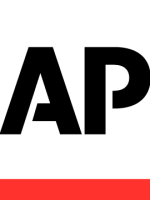WASHINGTON — The nation's first COVID-19 vaccine will begin arriving in states Monday morning, U.S. officials said Saturday, after the government gave the final go-ahead to the shots needed to end an outbreak that has killed nearly 300,000 Americans.
Trucks will roll out Sunday morning as shipping companies UPS and FedEx begin delivering Pfizer's vaccine to nearly 150 locations, said Army Gen. Gustave F. Perna of Operation Warp Speed, the Trump administration's vaccine development program. Another 450 sites will get the vaccine Tuesday and Wednesday.
The locations include hospitals and other sites able to meet the ultra-cold storage requirements for the vaccine. Within three weeks, vaccines should be delivered to local pharmacies and other locations, Perna said at a news conference.
The vaccine was timed to arrive Monday morning so that health workers would be available to receive the shots and begin giving them, Perna said.
It was unclear who would receive the first dose of the vaccine, though health workers and nursing home residents were the priority. Perna said that decision would be determined by health authorities.
The announcement kicks off a massive logistical operation involving the federal and state governments, private companies and health care workers to quickly distribute limited vaccine supplies throughout the U.S.
Initially, about 3 million shots are expected to shipped nationwide, according to officials with Operation Warp Speed. A similar amount is to be held in reserve for those recipients' second dose.
Initial shipments are expected to leave Pfizer's manufacturing plant in Kalamazoo, Michigan, via truck and then be flown to regional hubs around the country.
Adding to the distribution challenge is that the Pfizer-BioNTech vaccine must be stored and shipped at ultra-low temperatures of about 94 degrees below zero Fahrenheit. Pfizer has developed shipping containers that use dry ice, and GPS-enabled sensors will allow the company to track each shipment and ensure it stays cold.
The green light to begin vaccinations came late Friday after the Food and Drug Administration authorized emergency use of the vaccine. The signoff capped an unprecedented global race to speed vaccines through testing and review, chopping years off the normal development process.
The FDA found the vaccine highly protective with no major safety issues. U.S. regulators worked for months to emphasize the rigor and independence of their review, but the Trump administration pressured the agency up until the final announcement. A top White House official even threatened to remove FDA chief Stephen Hahn if a ruling did not come before Saturday.
Concerns that a shot was rushed out could undermine vaccination efforts in a country with deeply ingrained skepticism about vaccines. Hahn again emphasized his agency's independence to reporters Saturday.
"Science and data guided the FDA's decision," Hahn said. "We worked quickly because of the urgency of this pandemic, not because of any other external pressure."
While determined to be safe, regulators in the U.K. are investigating several severe allergic reactions. The FDA's instructions tell providers not give it to those with a known history of severe allergic reactions to any of its ingredients.
The FDA's vaccine director, Dr. Peter Marks, said the agency will carefully track any reports of allergic reactions in the U.S.
"I think we still need to learn more, and that's why we'll be taking precautions," Marks said.
The FDA next week will review a second vaccine from Moderna and the National Institutes of Health that appears about as protective as Pfizer's shot. On Friday, the Trump administration announced it had purchased 100 million more doses of that vaccine on top of 100 million it previously ordered.
The announcement came after revelations last week that the White House opted not to lock in an additional 100 million doses of Pfizer's vaccine for delivery in the second quarter of 2021. The Trump administration contends the current orders plus those in the pipeline will be enough to accommodate any American who wants to be vaccinated by the end of the second quarter of 2021.




